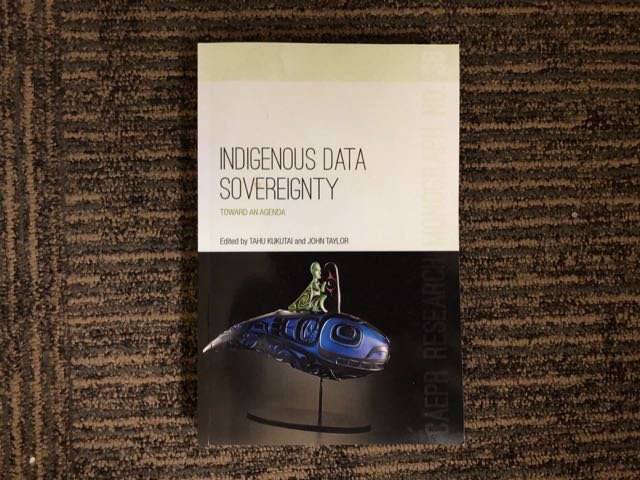Strengthening Evaluation with Indigenous Data Sovereignty
One of our Research Associates had an opportunity to attend a discussion with national grantees from the CDC Good Health and Wellness in Indian Country program in February with lessons learned from the Indigenous Data Sovereignty; Toward an Agenda book. The topic is close to several of our projects, as we work alongside with several tribal partners in evaluating their programs. Indigenous Data Sovereignty offers a chance to address the issues (lack of data and misuse of data) of the past and build on the values and strengths of indigenous peoples.
In this book, contributor Maggie Walter shares the five Ds of data on indigenous peoples that are routinely used: disparity, deprivation, disadvantage, dysfunction, and difference.[1] Walter contends that the work of Indigenous Data Sovereignty expands our knowledge and understanding, allowing stories to be shared outside of the limited five Ds.
Indigenous Data Sovereignty, at its core, represents the right of indigenous peoples to establish control over the collecting, storing, and sharing of information by indigenous and non-indigenous groups alike. C. Matthew Snipp, the Chair of Native American Studies at Stanford University, offers three crucial aspects of data sovereignty:[2]
1. Who: Indigenous peoples ought to decide who is counted among them, who it is that “belongs among them and who should be excluded for the purposes of data collection”;
2. What: Data collected from indigenous groups must represent the “interests, values, and priorities of native people”; and
3. For whom: Once data has been collected, indigenous peoples reserve control over it, and “determine who has access to these data.”
At ACET, we have the honor of supporting several tribal communities in conducting evaluations on a range of programs. Consider picking up a copy of Indigenous Data Sovereignty.[3]
[1] Walter, M. (2016). Data Politics and Indigenous Representation in Australian Statistics. In Taylor, J. and Kukutai, T. (Ed.), Indigenous Data Sovereignty; toward an agenda (pp. 79-97). Australia: Australian National University Press.
[2] Snipp, C. M. (2016). What Does Data Sovereignty Imply: What Does It Look Like? In Taylor, J. and Kukutai, T. (Ed.), ibid.
[3] Taylor, J. and Kukutai, T. (2016) Indigenous Data Sovereignty; toward an agenda. Australia: Australian National University Press.

